
115 Marina Dr
St. Simons Island, GA, US, 31522
Tel:912-638-8573
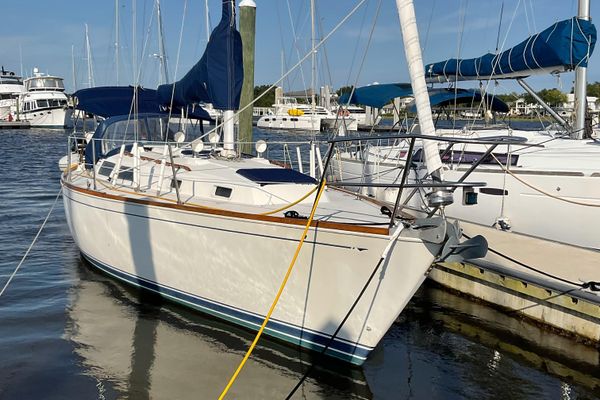
1989 Sabre 34 MK II
PRICE REDUCED
****CRUISE READY****
Beautiful Sabre 34 shoal draft (4') / center board keel (7'8") MK II Racer/Cruiser ready to Sail Away.
Great Suite of Sails, New Isinglass, Large 10'' Garmin plotter
New Davits just installed, Low Engine Hours (1150), overhauled/painted Mast
Annual winterization and haul out (mast down and shrink wrapped) since new
The Sabre brand of sailboats doesn't get enough recognition in the market - they are a rare breed of high quality, semi-custom sailboats ranking high on the performance scale, and known to be a very well built boat.
Topaz spent the majority of her life, and its two owners, up in New England, where she was sailed for the summer months and then pulled out on the hard, mast unstepped, winterized and shrink wrapped. So, she had breakdown and re-rigging activities each year which shows when you examine the gel coat, hatches, rigging and deck - nearly zero gel coat cracks.
The current owners purchased the boat in 2018 and relocated to St. Simons Island, GA. in 2020 where they cruise the ICW and the surrounding barrier islands. The current owners have put some nice work into making Topaz perfect and in good sound condition for the next owner. Topaz would be the perfect boat for the cruising couple or small family looking for a comfortable, well built, safe cruising boat with great sailing performance for local club races.
This is a very clean, well maintained and thought after Sabre - she looks pristine and is a very good value for money. If you're needing shipping quotes, I can help with that too. Dunbar ships boats as far away as California and can assist with trailer/ship prep so that boat arrives perfect - please get in touch.
Below are a few key maintenance items and upgrades done by the current owners since 2019.
2022 UPGRADES
- Full Engine Service Last month (Fuel filter x2, Oil Filter, Oil + stabilizer) 1/2022
- Barnacle Buster ran through engine's cooling system
- Sand and Varnished all brightwork (Toe rail, Handrails, swim ladder, hatch boards)
- Replaced bow & stern light fixtures with LED
- Replaced all interior lights with LED
- Replaced Masthead light fixture with LED
- Measured and remarked anchor chain/rode
- Resealed anchor locker
- Re-caulked the top deck and all hardware connections
- Replaced engine instrument cover and centerboard winch cover
- Added stainless steel pipes for deck mounted fuel cans
- Added fishing rod holders
- Clean bottom, clean bilge, detailed entire topside, and polished stainless
2021 UPGRADES
New Bimini with Dodger connector
SunPower 115W solar panel with MMP controller
Odyssey AGM batteries
ProMariner 30 amp Galvanic Isolator
Mantus 35lb anchor with new chain and rode
Martek Dinghy Davits
Replaced Stuffing Box packing
New Equipment and Upgrades - 2019
Garmin GMR Fantom 18 Radar
Garmin GPSMap 1042XSV 10" Chart Plotter
Furuno DST-800PSF depth,speed,temp sensor
Stainless Steel Cowl Vents - 4
Water Heater 6 gal.
135 Head Sail
Mast & Boom Repainted 2019
Maintenance - 2020
Bottom Repainted - two coats
New Westerbeke exhaust elbow
New Westerbeke water pump,thermostat,engine hoses and impeller
New ProMariner battery charger
Specifications
Engine 1 Specifications
Media Gallery
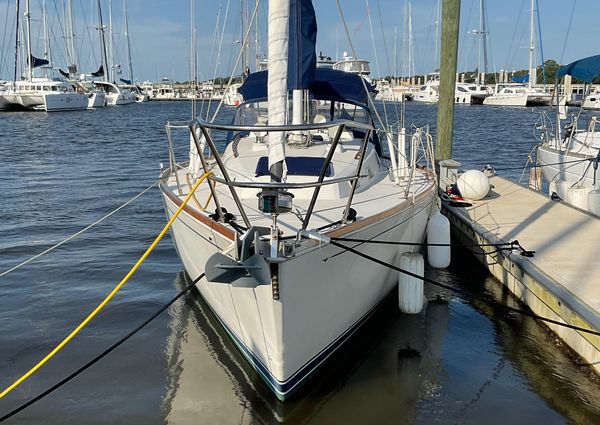 |
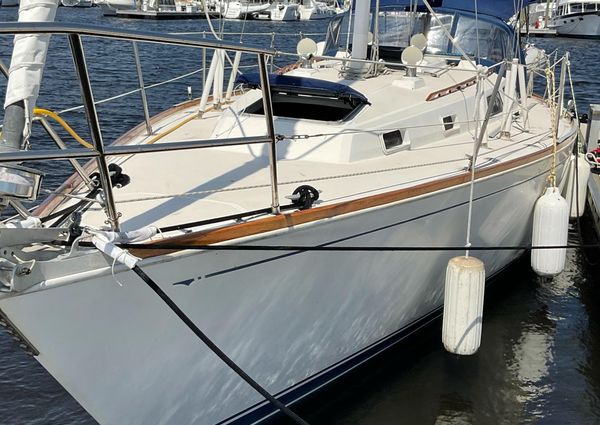 |
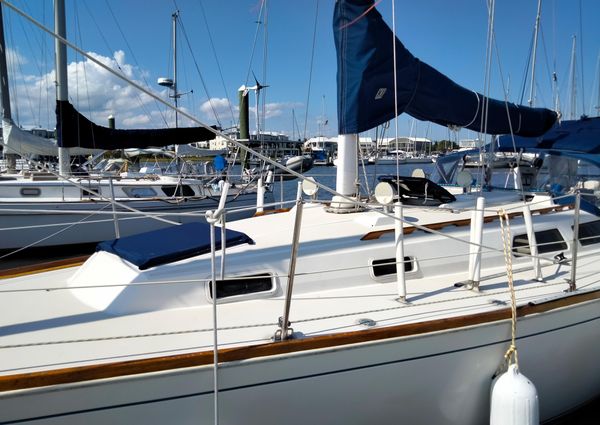 |
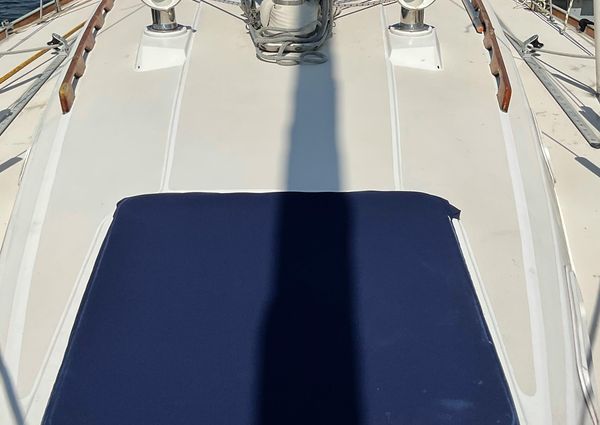 |
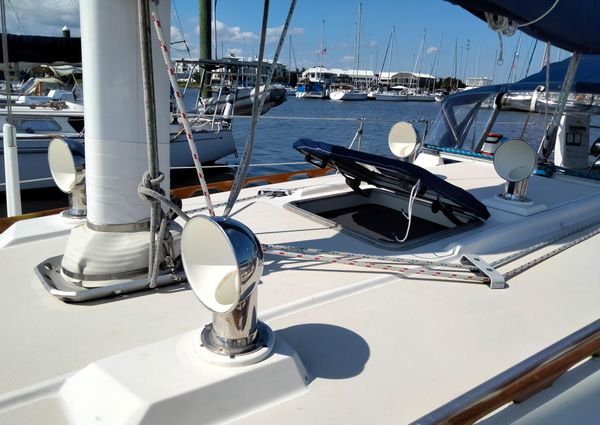 |
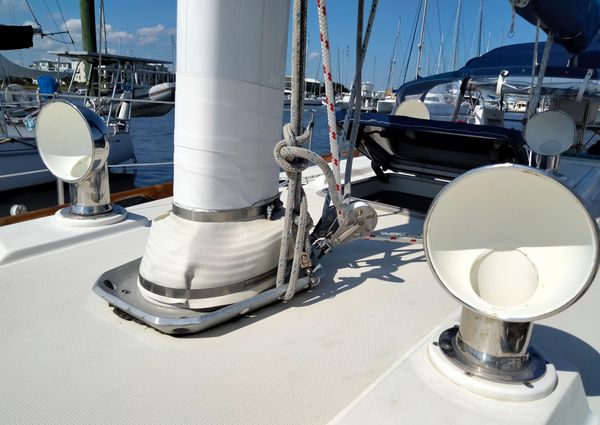 |
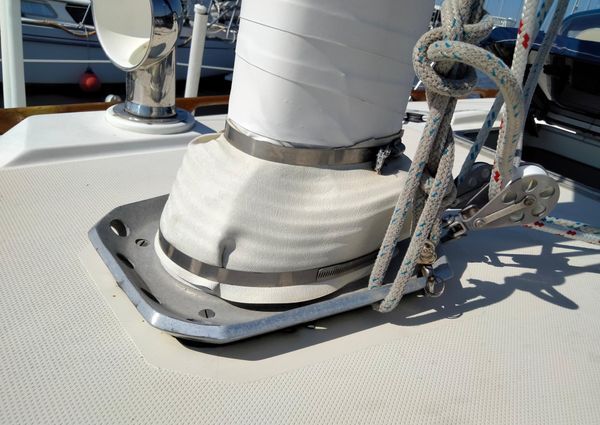 |
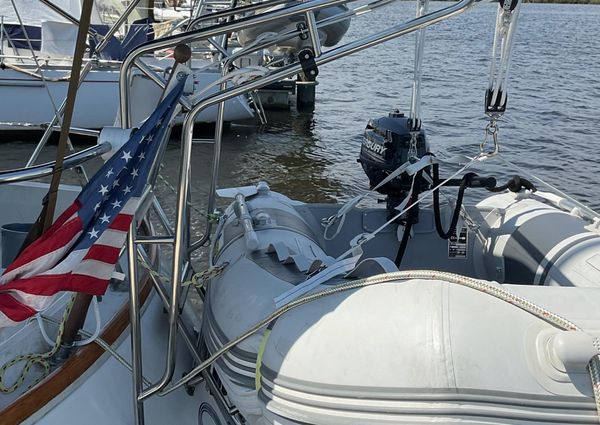 |
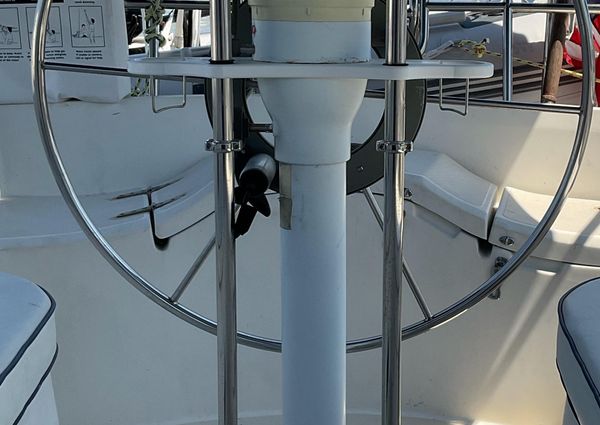 |
 |
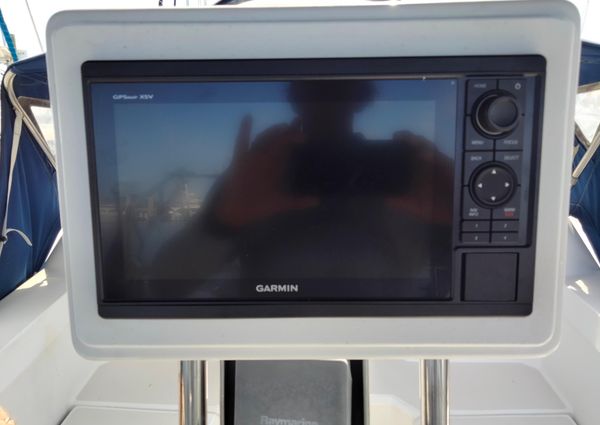 |
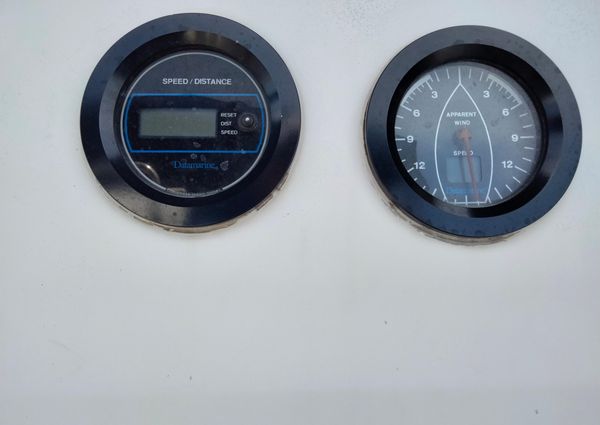 |
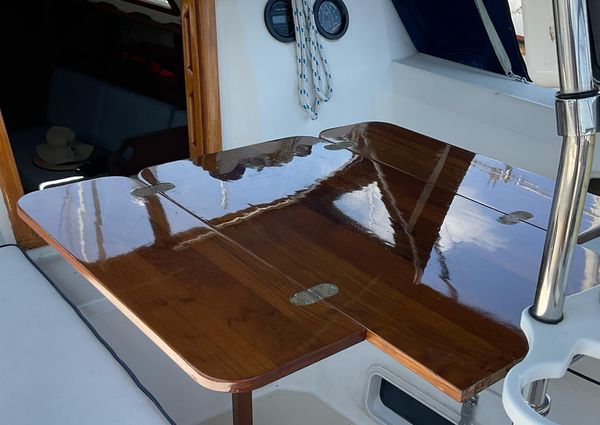 |
 |
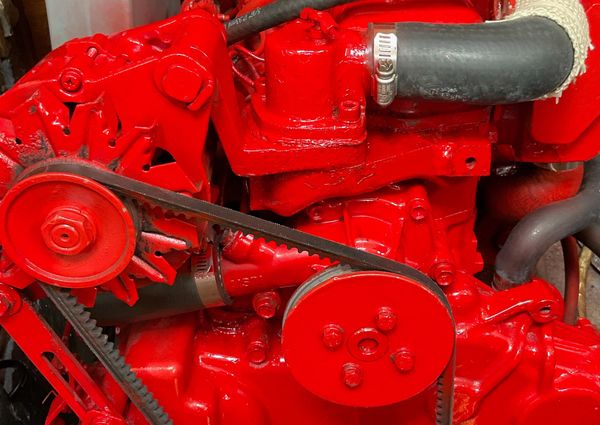 |
 |
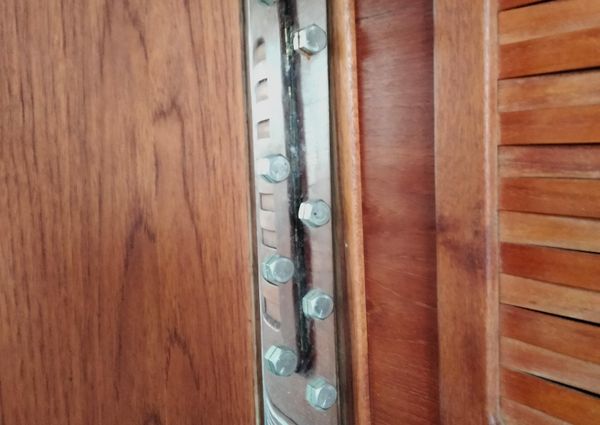 |
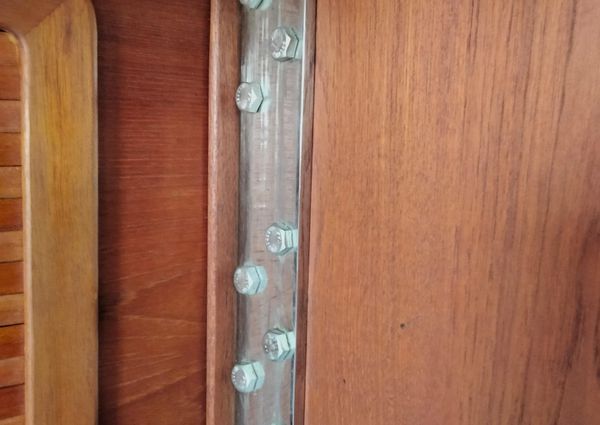 |
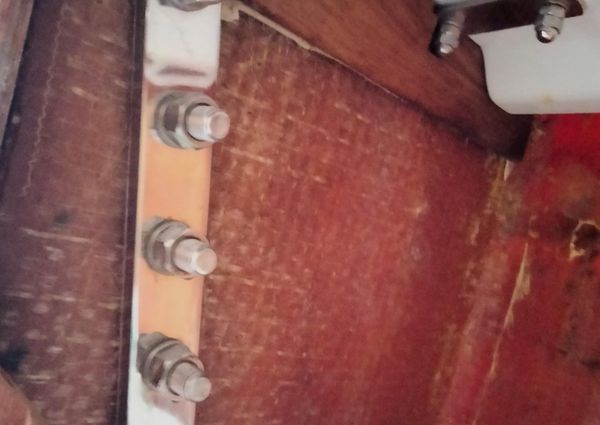 |
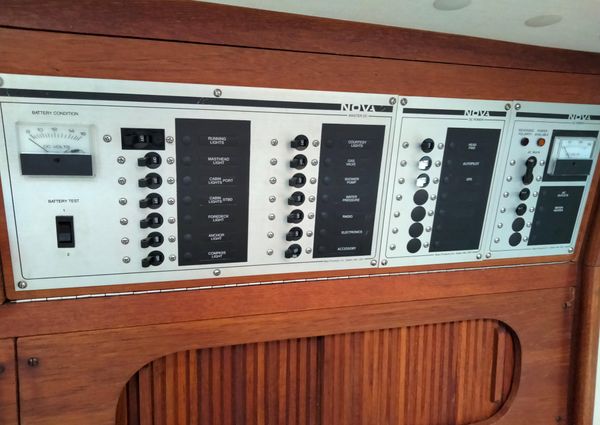 |
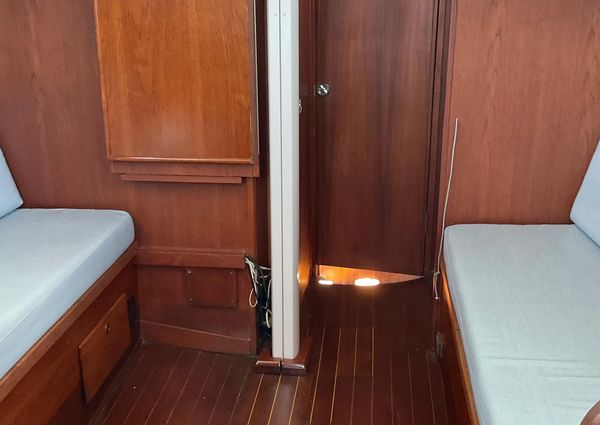 |
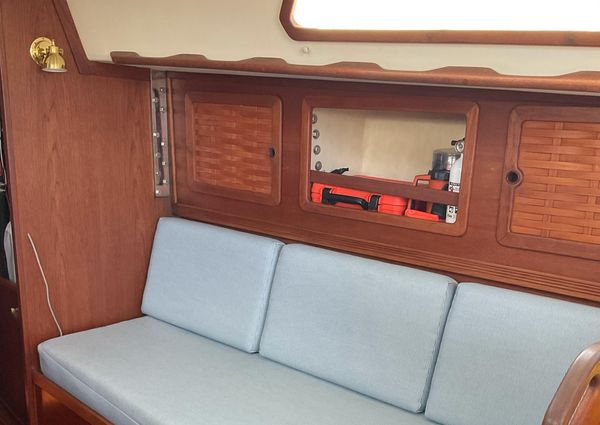 |
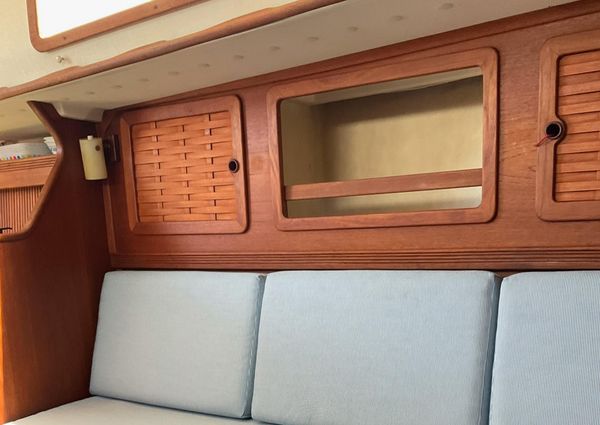 |
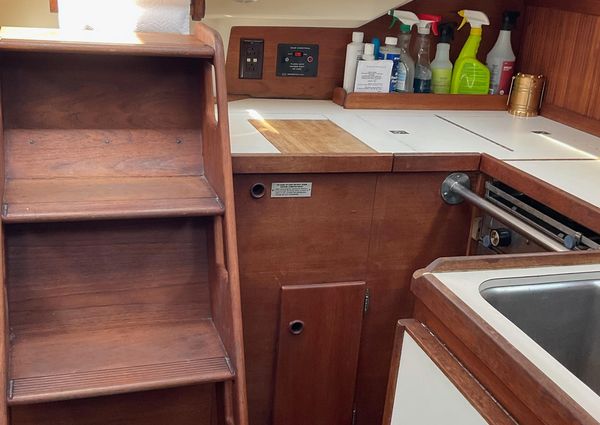 |
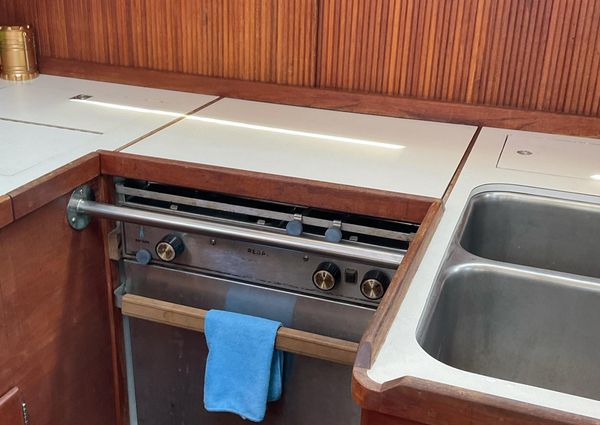 |
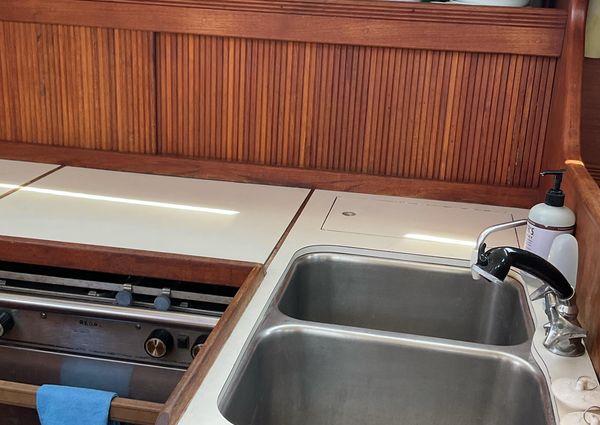 |
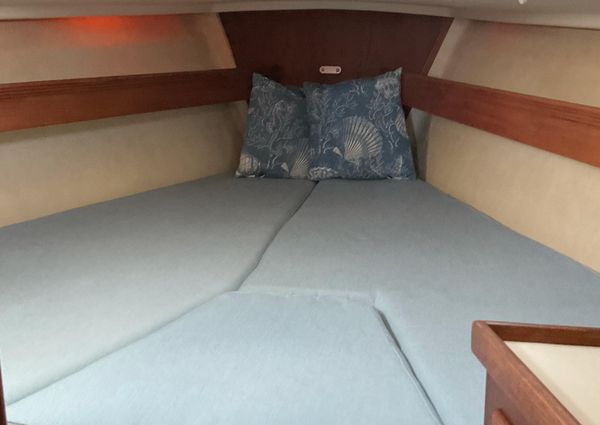 |
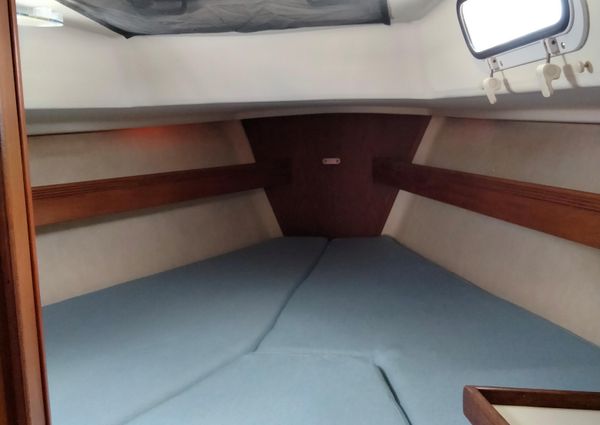 |
 |
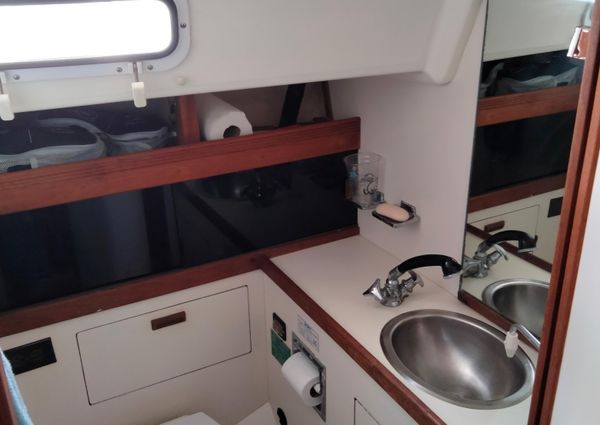 |
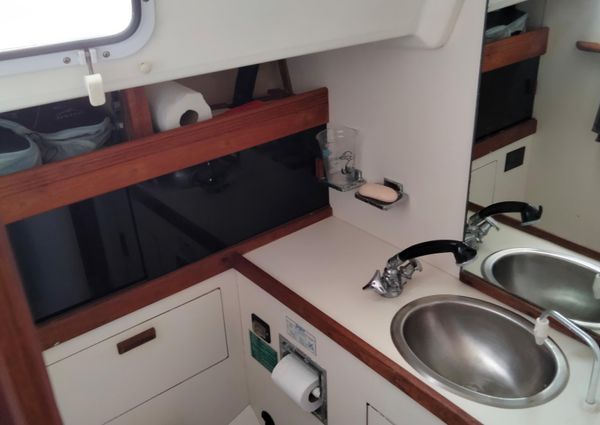 |
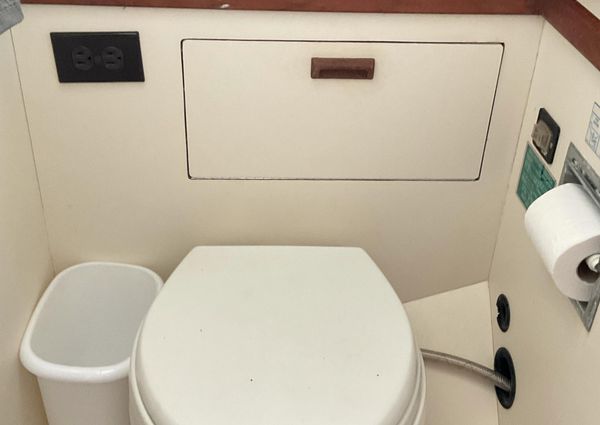 |
Garmin GMR Fantom 18 Radar Garmin GPSMap 1042XSV 10" Chart Plotter Furuno DST-800PSF depth,speed,temp sensor
Raymarine Wheel Auto Pilot.
New Equipment - 2019 Garmin GMR Fantom 18 Radar Garmin GPSMap 1042XSV 10" Chart Plotter Furuno DST-800PSF depth,speed,temp sensor Stainless Steel Cowl Vents - 4 New Water Heater 6 gal. New 135 Head Sail Mast & Boom Repainted 2019 Maintenance performed 2020 Bottom Repainted New Westerbeke exhaust elbow New Westerbeke water pump,thermostat,engine hoses New ProMariner battery charger
Interior and Systems
The Mark II featured two interiors, one is an aft-cabin model with a private double to port. Our test boat had the traditional layout: Moving aft from the V-berth, theres a head and shower to port and a hanging locker to starboard. In the main saloon, twin settees face a fold-up dining table. The U-shaped galley is aft to port, across from the navigation station and a double pilot berth.
The boat has a 6-foot, 3-inch headroom throughout most of the interior, and all berths are 6 feet, 4 inches long, even the settees, which will make good seaberths with the addition of lee cloths. Cabin ventilation is good with two hatches and four dorade vents-seagoing essentials that seem to have been forgotten in many contemporary designs.
Seventy-six gallons of fresh water in two tanks and a 30-gallon holding tank offer adequate range for coastal cruising, but the water and diesel (20 gallons) will likely need to be supplemented for longer cruising. Storage is adequate, and engine access-partially blocked on the portside-is rated as fair to good by most owners we surveyed.
Theres a surfeit of teak trim throughout the boat, and being stick-built-in which the furniture components are built into the hull individually rather than dropped in as a large pre-molded form, as is the norm today.
The original stove was a two-burner Shipmate alcohol stove; a CNG stove was optional. Sliding cupboards offer room for plates and canned goods. The icebox is well insulated, although its placement next to the engine room means it needs to work harder than most. A fold-up cutting board adds counter space. It is a tight, but functional galley for a boat of this size.
Standard propulsion is a 27-horsepower Westerbeke (marinized Mitsubishi) with a two-blade propeller. The unprotected offset prop, which exits to port of the rudder at an angle, was cited by a few owners as a concern in areas with lots of lobster traps. Some owners mentioned that they missed the advantage of being able to use prop-wash to maneuver at low speeds.
All through-hulls are bronze and grounded to the keel. The standard electrical system included two 100-amp hour batteries, enough for modest cruising demands.
On Deck
On Sabre 34s, Crew have enough room to recline against the cabintop, and the helmsmen has a clear view to steer from out of the fray-a positive that comes to light in PHRF racing.
The coamings are fairly low, good for leaving and entering the cockpit, and broad enough to sit on in the forward sections. Two catch-all bins, a tray locker (starboard), and a deep seat locker (port), as well as a deep storage area aft, offer adequate space for storing lines and fenders. A high bridgedeck and solid teak hatchboards keep the cockpit dry. There is no molded coaming for a dodger or sprayhood, but many owners have been able to add functional dodgers without too much trouble.
Winch placement is fairly conventional for its day, with halyard winches on the mast. There are two coaming-mounted primaries (Lewmar 42C) for the genoa, a secondary to starboard of the companionway (Lewmar 30C) for the outhaul, and the mainsheet winch to port of the companionway (Lewmar 16C). The jib, mainsheet, and spinnaker halyards on the mast (all Lewmar 16Cs) are served by rope clutches. The 6:1 mainsheet leads to a mid-boom traveller, in front of the cockpit, where it wont interfere with a big bimini top. Most boats have the optional self-tailing primaries; some owners have upgraded to larger primaries-not a bad idea.
Two genoa tracks-one on the rail, one inboard, recessed on the deck-allow for optimal trim on and off the wind. Chainplates are well inboard, allowing tight sheeting angles, even when the sheet is led outside the shrouds. Passage fore and aft is good with teak handholds extending just forward of the mast.
Formidable 10-inch stainless cleats handle dock lines fore and aft, although there are no dedicated mid-ship cleats for spring lines. The anchor locker offers plenty of room for extended cruising. Although our test boat came with a cast fitting to serve two anchors, this is not standard in some early models.
Performance
At the end of the day, the reason to look at the Sabre 34 is two-fold: quality of construction and performance. We sailed a shoal-draft 34 in 12 to 15 knots true wind on Sarasota Bay, Fla. Most of the windward work was carried out under a partially furled jib (about 100 percent), which kept the boat moving at about 6.3 knots, when hard on the wind. The inefficient sail shape impacted tacking angles, which hovered around 53 degrees, once leeway figured into the equation.
On a beam reach, the boat trotted along at 7 knots with fingertip control, but off the wind (120 to 145 degrees), speed dropped to 5.7 knots-something an asymmetrical spinnaker would fix.
Helm response and balance was superb throughout the sail-even when we deliberately tried to impart some lee helm-and the boats high-aspect rig quickly translated heeling forces into forward acceleration. Every owner in our survey gave the boat high marks for performance.
Under power at just over 2,000 rpm, the boat cruised at 5.6 knots. Engine noise was above average. Vibration was minimal. At higher, less-fuel efficient speeds, the boat cruised at 6 knots, indicating enough reserve power to buck most tidal currents. Handling under power, as mentioned, is average, better than a full-keel boat, but less than a fin-keel boat with the prop center in front of the rudder.
Design
Hewson clearly listened to Sabre 34 (Mark I) owners when he went about designing the Mark II. While much of the attention went into improving creature comforts and creating more space below, and the hull and deck got much needed attention.
In plan view, there is little hint of the International Offshore Rule (IOR) tendencies toward disproportion that were evident in the Mark I. A more U-shaped, broader, flatter stern replaced the originals V-shaped, IOR-hallmark stern.
The fine bow entry is reminiscent of some Sparkman & Stephens designs from this period, as is the long bow overhang that helps keep anchors from clanging against the hull. Like Charlie Morgan, Hewson preferred a stern that followed the angle of the backstay, an eye-pleasing touch that is most apparent on paper.
The sheerline is flat and contemporary, with a low, well-proportioned cabin-top. While many Sabres sport a fashionable blue Awlgrip hull that brings out the teak toerail, a white gelcoat model will offer fewer maintenance hassles over the long run.
Underwater, the boat has a fine entry, with a U-shaped hull that resists pounding better than some faster, flatter-entry boats we see today. The aft sections are also rounder and fuller than many contemporary cruisers, but theres more than enough flat surface area for the boat to achieve double-digit surfing speeds and still be in control.
One of the universal praises for the boat is how well it handles in a breeze-even at the top end of its design limits. The bolt-on, lead-ballast fin keel has an efficient NACA profile, as does the balanced rudder.
Our test boat was a 1992 Sabre 34 Mark II. Hull number 430, the wing-keel boat was the last hull built. It is owned by Alan Pressman, a Sarasota, Fla.-based regional dealer for Sabre. In 12 to 15 knots of wind, the boat required minimal effort to steer-and sailed herself for much of the time.
The keel-stepped mast is a tall, double-spreader, masthead rig (the Mark I had only single spreaders), with a high-aspect mainsail and overlapping jib.
The 11,500-pound displacement boat came in three models: the performance-oriented fixed-keel model, which draws 6 feet; the centerboard model, which draws 4 feet with the board up and 7 feet, 8 inches board down; and the wing-keel version, which draws 4 feet, 6 inches.
The Company offers the details of this vessel in good faith but cannot guarantee or warrant the accuracy of this information nor warrant the condition of the vessel. A buyer should instruct his agents, or his surveyors, to investigate such details as the buyer desires validated. This vessel is offered subject to prior sale, price change, or withdrawal without notice.
Contact
Ray Thomas
(904)480-1381
ray@dunbaryachts.com